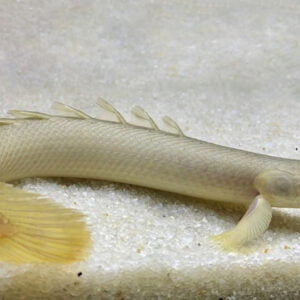“Raphael Catfish (Chocolate Doradid)” has been added to your cart. View cart
Purchase this Product and Earn 0.80 Reward Points (₱0.80)
Glo Barb (Starfire Red)
Earn 0.80 Reward Points
₱80.00
Out of stock
Categories All, Fresh-Water Fish, Tetras
Your live fish may not match the image shown due to natural variations in each species. Each companion animal is different in shape, color, and personality.
Scan to Purchase
Tiger Barbs (Puntigrus tetrazona) are vibrant and active freshwater fish known for their striking black vertical stripes and energetic behavior. Here’s a comprehensive care guide for Tiger Barbs:
Aquarium Setup:
- Tank Size:
- A minimum tank size of 20 gallons is recommended for a small school of Tiger Barbs.
- Provide additional space for larger groups or if keeping them with other fish species.
- Water Parameters:
- Temperature: 72-78°F (22-26°C)
- pH: 6.5-7.5
- Hardness: 5-15 dGH
- Filtration:
- Use a quality filtration system to maintain water quality and provide adequate oxygenation.
- Tiger Barbs are not particularly sensitive to water conditions but appreciate clean water.
- Substrate and Decor:
- Use fine gravel or sand substrate.
- Provide ample hiding spots with plants, driftwood, and decorations.
- Ensure open swimming areas as Tiger Barbs are active swimmers.
Feeding:
- Diet:
- Tiger Barbs are omnivores and will accept a variety of foods.
- Offer a balanced diet consisting of high-quality flake or pellet food supplemented with occasional live or frozen foods like bloodworms, brine shrimp, or daphnia.
- Feed them small portions multiple times a day.
Health and Maintenance:
- Tank Maintenance:
- Perform regular water changes (20-25% weekly) to maintain water quality and remove waste.
- Clean the substrate and filter regularly to prevent the buildup of debris.
- Monitoring Health:
- Watch for signs of illness such as lethargy, loss of appetite, abnormal swimming behavior, or visible signs of disease.
- Quarantine new fish before introducing them to the main tank to prevent the spread of diseases.
Behavior and Compatibility:
- Temperament:
- Tiger Barbs can be semi-aggressive, especially if kept in small numbers.
- They are best kept in groups of at least 6 individuals to spread aggression within the group.
- Avoid keeping them with slow-moving or long-finned fish species that may become targets of their nipping behavior.
- Tankmates:
- Compatible tankmates include other active and similarly sized fish species like danios, rasboras, tetras, and loaches.
- Avoid keeping them with slow-moving or peaceful species that may be stressed by their active behavior.
Breeding:
- Breeding Conditions:
- Tiger Barbs are relatively easy to breed in a home aquarium.
- Provide fine-leaved plants or spawning mops as breeding sites.
- Increase the water temperature to around 78-80°F (25-27°C) and provide a photoperiod with longer daylight hours to induce spawning.
- Fry Care:
- Remove the adult fish from the breeding tank after spawning to prevent them from eating the eggs.
- The fry will hatch within a few days and can be fed infusoria or commercially available fry food until they are large enough to accept regular fish food.
Common Issues:
- Aggression:
- Tiger Barbs can be aggressive, especially if kept in small numbers or inadequate space.
- Ensure they are kept in appropriate group sizes and provided with plenty of hiding spots to reduce aggression.
- Fin Nipping:
- In some cases, Tiger Barbs may exhibit fin-nipping behavior, especially if they are kept in insufficient numbers or in overcrowded conditions.
- Monitor tank dynamics and provide plenty of space and hiding spots to minimize aggression.
By following these care guidelines, you can provide a suitable environment for Tiger Barbs, allowing them to thrive and exhibit their natural behaviors in the aquarium.
Related products
-
Tiger Barb (GloFish®)
₱35.00 – ₱120.00 Select options This product has multiple variants. The options may be chosen on the product page







